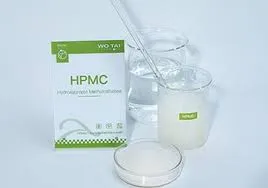
lis . 18, 2024 11:25 Back to list
Similar Concepts in HPMC Applications for Modern Pharmaceutical Formulations
Understanding HPMC A Comprehensive Overview
Hydroxypropyl Methylcellulose (HPMC) is an intricate derivative of cellulose, a naturally occurring polymer that forms the backbone of plant cell walls. In recent decades, HPMC has gained tremendous attention across various industries, including pharmaceuticals, food, cosmetics, and construction, primarily due to its versatile properties and functionalities.
Chemical Structure and Properties
HPMC is produced by modifying cellulose through etherification, where hydroxyl groups on cellulose are replaced with hydroxypropyl and methyl groups. This modification enhances the solubility of cellulose in water and organic solvents, making HPMC an effective rheology modifier, binder, and film-forming agent. Chemically, HPMC is characterized by its high degree of substitution, which influences its solubility and viscosity in aqueous solutions. The viscosity grade and the degree of substitution can be tailored to meet specific application requirements.
One of the most appealing properties of HPMC is its ability to form gels and films. When mixed with water, it provides a viscous solution that offers excellent stability, which is particularly useful in pharmaceutical formulations where it can act as a controlled-release agent. Furthermore, HPMC is non-toxic and biocompatible, making it suitable for applications in the food and cosmetic industries.
.
1. Pharmaceutical Industry HPMC plays a crucial role in the pharmaceutical sector, primarily as a thickening agent and stabilizer. It is commonly used in oral drug formulations, including tablets and capsules, where it serves as a binder to hold the active ingredients together. Additionally, its ability to form hydrogels allows for controlled drug release, enhancing the bioavailability of medications. HPMC is also found in eye drops and other liquid formulations where it helps maintain viscosity for improved patient comfort.
hpmc 200000

2. Food Industry In the food sector, HPMC is utilized as a food additive, where it acts as a thickening agent, emulsifier, and stabilizer. Its ability to improve texture and mouthfeel makes it popular in various applications, including sauces, dressings, and baked goods. HPMC is often used in gluten-free products as it helps mimic the texture provided by gluten, offering a better sensory experience.
3. Cosmetics and Personal Care HPMC's film-forming properties are valuable in cosmetics formulation. It is widespread in lotions, creams, and gels, where it helps stabilize emulsions and enhances the product's spreadability. Furthermore, its moisturizing properties make it a common component in products aimed at hydration.
4. Construction Industry In construction, HPMC is utilized in cement, mortar, and tile adhesives. It improves the workability of these materials and helps retain moisture, allowing for better adhesion and curing times. Its water-retaining properties significantly enhance the performance of construction materials, making them more durable.
Environmental Considerations and Safety
As an inherently biodegradable material derived from renewable resources, HPMC is increasingly recognized for its environmental friendliness compared to synthetic polymers. It poses minimal risk to human health, as studies have shown it to be non-irritating and safe for consumption. Regulatory bodies, including the FDA, have deemed HPMC safe for use in food and pharmaceutical products, adding to its appeal across various sectors.
Conclusion
In conclusion, Hydroxypropyl Methylcellulose (HPMC) represents a remarkable example of a versatile polymer that has found its way into numerous applications due to its unique properties. Its ability to enhance formulations across pharmaceuticals, food, cosmetics, and construction demonstrates its significant impact on everyday products. As industries continue to seek sustainable and effective solutions, HPMC stands out as a reliable and eco-friendly choice, paving the way for innovation and improvements in various sectors. As research progresses, we can expect to see even broader applications and improvements in the functionalities of HPMC, making it a polymer to watch in the coming years.
-
The Widespread Application of Redispersible Powder in Construction and Building Materials
NewsMay.16,2025
-
The Widespread Application of Hpmc in the Detergent Industry
NewsMay.16,2025
-
The Main Applications of Hydroxyethyl Cellulose in Paints and Coatings
NewsMay.16,2025
-
Mortar Bonding Agent: the Key to Enhancing the Adhesion Between New and Old Mortar Layers and Between Mortar and Different Substrates
NewsMay.16,2025
-
HPMC: Application as a thickener and excipient
NewsMay.16,2025
-
Hec Cellulose Cellulose: Multi functional dispersants and high-efficiency thickeners
NewsMay.16,2025







